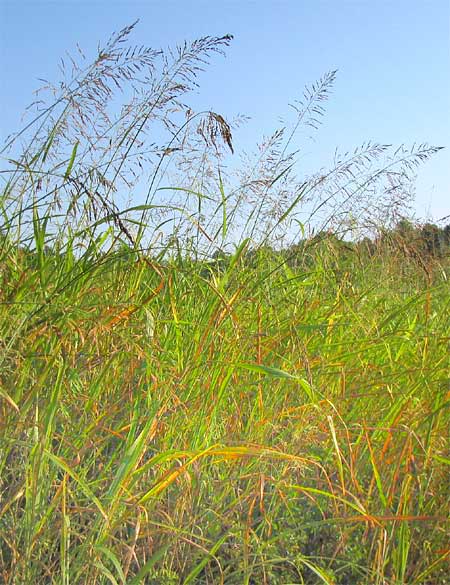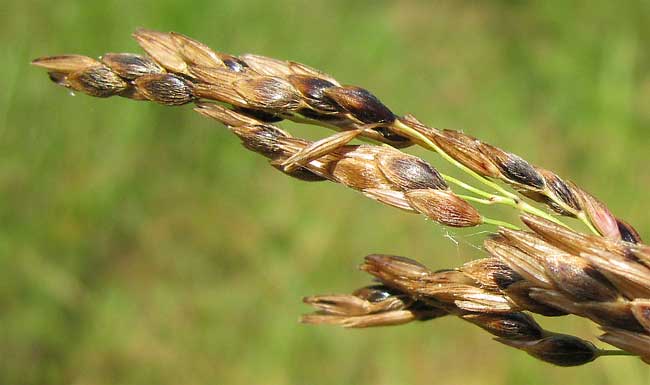Excerpts from Jim Conrad's
Naturalist Newsletter
from the June 30, 2008 Newsletter, issued from the forest near Natchez, Mississippi; elevation ~400ft (120m), ~N31.47°, ~W91.29°:
JOHNSON GRASS
When I was growing up on the farm in Kentucky the weeds that cut our soybean yields most were cocklebur, foxtail grass, and Johnson Grass. The first two weeds are written in small case because several species of cocklebur and foxtail exist, so they're generic names. But Johnson Grass is a particular species, SORGHUM HALEPENSE, an invasive species originally from Eurasia.
Around here where creek banks adjoin field edges the moist, sun-drenched soil often is populated with extensive seven-ft-tall thickets of Johnson Grass. On hot summer afternoons the grass is so coarse and luxuriant, so aggressively dominant, that it's hard not to admire its vitality. Surely this species will survive the planetary mass extinction now underway. That's intensely photosynthesizing Johnson Grass below:

Up close, Johnson Grass's flowers are elegant and being much larger than most grass flowers -- (1/5 inch, 5 mm long) -- the elegance is easy to see. Look at the handsome, brown, pollen-releasing anthers dangling on white, slender filaments, and the cream-colored, fuzzy stigmas issuing from flowers below:

Most Johnson Grass plants here flowered weeks ago, so most flowers have long lost their stamens and stigmas, and now are plumb and dark, their ovaries having matured into hard, blackish grains, as shown below.

You can imagine how sparrows, finches and other seed- eating birds gravitate to these thickets, relishing the seeds. Johnson Grass is in the same genus, Sorghum, as the grain crop Milo, which often turns up in commercial birdfeeder seed mixes. I suspect that deer must eat the plant, too, since livestock readily eat Johnson Grass as a pasture grass and in hay.